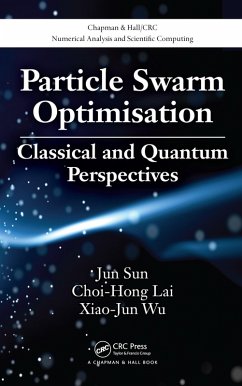Helping readers numerically solve optimization problems, this book focuses on the fundamental principles and applications of PSO and QPSO algorithms. The authors develop their novel QPSO algorithm, a PSO variant motivated from quantum mechanics, and show how to implement it in real-world applications, including inverse problems, digital filter d
Dieser Download kann aus rechtlichen Gründen nur mit Rechnungsadresse in A, B, BG, CY, CZ, D, DK, EW, E, FIN, F, GR, HR, H, IRL, I, LT, L, LR, M, NL, PL, P, R, S, SLO, SK ausgeliefert werden.

